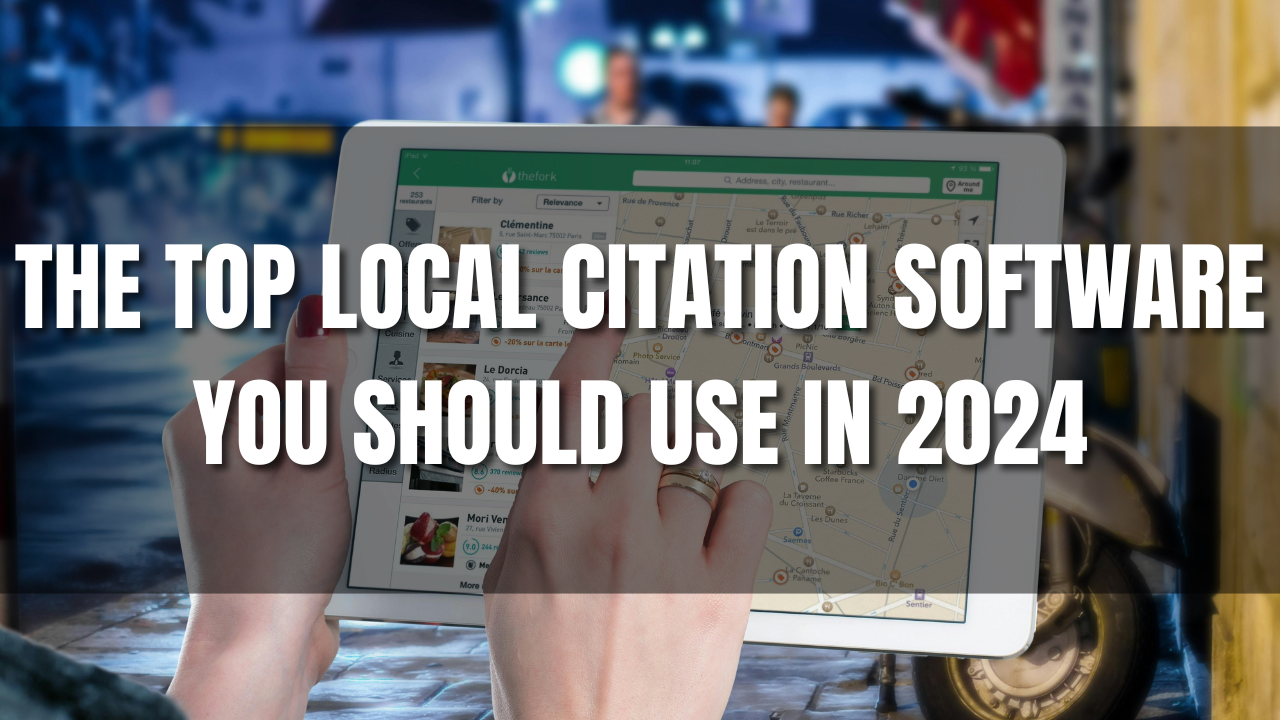Starting a local business is a daunting task. You have to worry about building a customer base, marketing your products or services, and establishing yourself as a credible source in your industry. But one of the most important – and often overlooked – aspects of running a successful local business is branding.
Branding is more than just putting a logo on your website and business cards. It’s about creating an identity for your company that customers can connect with. And it’s not something that happens overnight; it takes time and effort to build a strong brand presence. But don’t worry, we’re here to help you get started. In this article, we’ll discuss what local branding is, why it’s important, and how you can go about creating a successful branding strategy for your business.
What is Local Branding?
Local branding is the process of marketing a product or service to a specific geographic region. This can include targeting a particular city, county, state, or even country.
Local branding can be a very effective way to reach consumers in a specific area, and it can be especially useful for small businesses that are looking to build loyalty among local customers. By focusing on specific geographic areas, businesses can tailor their marketing messages to better resonate with local consumers.
There are a number of different ways to approach local branding, and there are also a number of different benefits to doing it effectively. Some of the key advantages of local branding include:
1. Increased visibility and recognition among local consumers.
2. Greater loyalty among local customers.
3. More targeted marketing messages that resonate more with local consumers.
4. Increased sales and market share in the local area.
How Local Branding Can Help Your Business
Branding is important for any business, whether it is local or not. However, local branding can be especially beneficial for businesses because it allows them to connect with their local community. This connection can help businesses attract new customers, as well as create loyalty among current customers.
There are a few ways that businesses can go about creating a local brand. One way is to create marketing materials that feature images of local landmarks or scenery. Additionally, businesses can incorporate words or phrases that are unique to their region into their branding. For example, a business in Maine could use the phrase “Thank you for your support, from the rocky coast of Maine” in its marketing materials.
Another way to create a strong local brand is to participate in community events and activities. This will allow businesses to get to know their local community and show them what they have to offer. Additionally, businesses can give back to their community by sponsoring or donating to local organizations or causes. Utilizing tools like The QR Code Generator can also help businesses enhance their branding by seamlessly integrating QR codes into their marketing materials, making it easier for customers to engage with their brand.
Overall, there are many benefits to having a strong local brand. By connecting with their local community, businesses can create loyalty among customers and attract new ones. Additionally, businesses can benefit from the goodwill they create by giving back to their community.
Best Tips on Building a Local Brand
When it comes to building a successful local brand, there are a few key things to keep in mind. First and foremost, it’s important to make sure that your branding is consistent across all channels. This means using the same logo (which you can create using professional tools like Zoviz), colors, and messaging across your website, social media profiles, print materials, and more.
Choosing a good local business name is an important step of this process, as it sets the tone for your branding efforts to create a memorable and meaningful brand name. You may use an online logo maker to develop a professional and unified logo that can be seamlessly included in your website, social media profiles, and other promotional materials in order to maintain consistency in branding across numerous platforms.
Budgeting is essential for starting a business. Small quick loans can be useful to get your business started or cover a small expense, but it’s important to also plan for long-term financial goals.
Another important factor to consider when building a local brand is target market. You’ll want to make sure that you’re targeting the right audience with your marketing efforts, and that you’re speaking to their needs and interests.
Finally, it’s important to be active in your local community. Get involved with local events and organizations, and connect with other businesses in your area. This will help you build relationships with potential customers and partners.
How to Conduct Local Market Research
When it comes to conducting local market research, there are a few key things you need to keep in mind. First, it’s important to understand your target audience and what motivates them. Once you know who your target market is, you can start to develop marketing strategies that will resonant with them. Additionally, it’s important to have a good understanding of your local competition and what they’re doing to attract customers. By doing your homework and understanding the local landscape, you can set yourself up for success.
How to Create a Compelling Brand Message
When creating a brand message, it’s important to keep in mind the audience you’re trying to reach. You need to think about what will resonate with them and what will make them want to buy your product or service.
One of the most important things to keep in mind is that your brand message should be consistent across all platforms. It should be reflected in your advertising, website, social media posts, and any other marketing materials you produce. This is particularly important for famous webflow agencies that aim to establish a strong and recognizable brand image.
Your message should also be clear and concise. It should tell your audience what your product or service is and why they should buy it. You don’t need to include every detail, but you should give them a general idea of what to expect.
Finally, your brand message should be believable. People are more likely to trust brands that seem authentic and honest. Make sure your messaging is truthful and accurate, and don’t overpromise or make unrealistic claims.
If you follow these tips, you’ll create a brand message that’s sure to resonate with your target audience and help you achieve your marketing goals.
Using Local SEO for Branding
When it comes to local SEO, businesses have a lot of different options for branding. One of the most important aspects of branding is making sure that your business is easily found by potential customers. This can be done through the use of local directories, search engine optimization, and social media marketing.
One of the best ways to improve your branding is through the use of local directories. These directories allow you to list your business with important information like your address, phone number, and website. This information helps potential customers find you easily on the web. In addition, many of these directories also allow you to list special offers and coupons on your profile page. This can be a great way to attract new customers and keep them coming back.
Another effective way to improve your branding is through search engine optimization (SEO). By optimizing your website for relevant keywords, you can improve your ranking in search engine results pages (SERPs). This means that more potential customers will see your website when they are searching for related terms. In addition, optimizing your website for local keywords can help you rank higher in local search results pages. This can be a great way to get more traffic from potential customers in your area.
Finally, social media marketing can also be a great way to improve your branding. By creating profiles for your business on popular social media sites like Facebook, Twitter, and LinkedIn, you can connect with more potential customers online. In addition, you can also use social media marketing to share news about your business, special offers, and coupons. This can help you build a strong relationship with potential customers and keep them coming back for more.
Local Branding Strategies You Can Use
When it comes to branding, local businesses have a few unique advantages. Name recognition is often much higher in smaller towns and rural areas, because people are more likely to know their neighbors and the people who run the businesses in their community. This makes marketing a local business much easier- you can simply rely on word-of-mouth recommendations from happy customers.
Another advantage of being a local business is that you’re more likely to be familiar with the needs of your community. You probably know which charities and events are most important to your customers, and you can tailor your branding and marketing strategy to reflect that. For example, you might choose to donate a percentage of your profits to a local charity or sponsor an event that’s important to your community.
There are plenty of other ways to market a local business, too. You can create a website or Facebook page that showcases your products or services, and make sure to list your location prominently. You can also distribute flyers or coupons in local businesses and post them in public places.
Ultimately, the key to successful local branding is to be creative and personalize your marketing strategy to fit your community. By taking into account the unique needs of your area, you can set yourself apart from the competition and connect with customers on a deeper level.
Using and Building Partnerships for Branding
When it comes to branding, partnerships are key. By working together with other businesses or organizations, you can create a powerful branding strategy that will reach more people and be more effective. There are a few different ways to go about building partnerships for branding:
1. Collaborate on marketing campaigns. This is a great way to get your brands in front of a new audience. Come up with a creative campaign that both of you can execute and promote.
2. Share resources. If you have complementary resources, share them with each other. This can help both of your brands grow in the long run.
3. Cross-promote each other’s content. This is a great way to reach new followers and customers. Share each other’s blog posts, social media posts, and even products and services.
By working together, you can create a powerful brand presence that will reach more people and be more effective.
Research Your Local Community for Local Branding
When it comes to branding, it’s important to know your local community. That’s why it’s important to do some research into your local area and find out what businesses and organizations are already doing well. Once you have that information, you can try to emulate their branding strategies and see if they work for your business as well. It’s also important to be aware of any changes or new developments in your local community, so you can keep your branding strategy up to date.
How Different Types of Businesses Can Use Local Branding
There are many different types of businesses, each with their own unique needs and branding strategies. Local businesses have the opportunity to take advantage of local branding to connect with customers in their area.
Local branding can be used by businesses of all sizes and in all industries. There are many ways to use local branding to connect with customers, including using local imagery, slogans, and fonts. Additionally, businesses can partner with local organizations and charities to further connect with the community.
Local branding is a great way for businesses to connect with customers and create a sense of loyalty and community involvement. By using local branding, businesses can create a connection with customers that goes beyond simply selling a product or service.
How to Get More Customer Reviews
When it comes to getting more online customer reviews, there are a few key things to keep in mind. First, make sure your business is listed on review sites like Yelp, Google, and Facebook. This will ensure that your customers can easily find and leave reviews for your business.
Second, make it easy for your customers to leave reviews. Include clear instructions on how to write a review (including the website URL) on your website and in your marketing materials. You can also offer incentives (like discounts or free products) to customers who write reviews.
Finally, be patient. It may take some time for customers to leave reviews, but if you follow the tips above, you’ll be well on your way to getting more online customer reviews!
Using PR for Local Branding
Public relations can be used to create a positive image for a local business. In order to do this, the business should develop a public relations plan. The plan should include goals, strategies, and tactics. The goal of the public relations campaign should be to create a positive image for the business and increase awareness of its products or services. The strategies should include activities such as media relations, community relations, and employee communications. The tactics could include using social media, issuing press releases, and hosting events.
A local business can use public relations to build a strong relationship with its community. This can be done by participating in events, sponsoring programs, and donating time or money to local charities. The business can also get involved in the community by creating a social media page that shares news about the community and engages with residents. Additionally, the business can send employees to meet with community leaders and attend local events.
Public relations can also help a local business build relationships with the media. The business can reach out to reporters to discuss upcoming products or services, provide expert commentary on current events, or offer story ideas. The business can also issue press releases about important news or milestones. Additionally, the business can host events that are open to members of the media.
Examples of Local Branding
Local branding can be extremely effective in increasing customer loyalty and generating word-of-mouth marketing. For example, the coffee shop chain Dunkin’ Donuts has built up a large following partly by using local branding. Each Dunkin’ Donuts location is given a unique name and logo, and the company sponsors local events and teams. This helps to create a sense of connection between customers and their local Dunkin’ Donuts store, which encourages them to keep coming back.
Another great example of local branding is the grocery store chain Trader Joe’s. Unlike most other grocery stores, Trader Joe’s does not have a national advertising campaign. Instead, the company focuses on building strong relationships with its local customers.
Each store features unique product offerings and a distinctive décor, and employees are encouraged to get to know their customers on a personal level. This strategy has been very successful for Trader Joe’s; the company has a cult-like following among its customers.
How Local Brands Are Different From Global Brands?
When it comes to brands, there are typically two types: local and global. Local brands are those that are only known in a specific geographic region, while global brands are known all over the world. There are many reasons why local brands are different from global brands.
One of the biggest differences between local and global brands is their marketing strategies. Local brands typically rely on word-of-mouth marketing and grassroots campaigns, while global brands use more traditional advertising methods like TV commercials and billboards. This is because local brands don’t have the same resources as global brands, so they have to be more creative with their marketing.
Another big difference between local and global brands is their target markets. Local brands typically target a specific demographic, while global brands try to appeal to everyone. This is because local brands can’t afford to market their products to a large audience, while global brands can afford to do so.
Finally, the biggest difference between local and global brands is the quality of their products. Local brands typically make lower-quality products than global brands because they don’t have the same resources. This is because local brands usually don’t have as much money to spend on research and development, or on manufacturing processes.
Frequently Asked Questions
What is the local branding strategy?
When it comes to local branding, businesses have to think about what strategies will work best for them in their specific location. There are a few different things that businesses can do in order to create a strong local branding strategy.
One thing businesses can do is focus on creating a unique identity for their company. This can be done through the use of signage, logo design, marketing materials, and website design. When a business has a strong and unique visual identity, it will help customers remember them and stand out from the competition.
Another thing businesses can do is get involved in their community. This can be done by sponsoring local events, donating to charity organizations, or partnering with other businesses in the area. By getting involved in the community, businesses can create positive relationships with locals and make themselves known as a valuable member of the community.
Finally, businesses should make sure that their website is optimized for local search. This means including keywords and phrases that relate to the business’ location, as well as listing their address and phone number on the website. By doing these things, businesses can make it easier for potential customers in their area to find them online.
Why is local branding important?
Local branding is important because it allows businesses to connect with their customers on a more personal level. When customers feel like they have a connection to the business, they are more likely to return, recommend the business to others, and spend more money. Local branding can also help businesses stand out from the competition by showcasing what makes them unique. In a world where it’s becoming increasingly easy for consumers to buy products from all over the world, local businesses that focus on building a strong local brand will be more successful in the long run.
How do you create a local brand?
When it comes to creating a local brand, there are a few key things to keep in mind. First and foremost, it’s important to make sure that your branding is consistent across all channels – from your website and social media profiles to your print materials and signage. It’s also important to make sure that your branding is tailored to your local audience, and that you’re communicating your unique selling proposition (USP) in a way that resonates with them.
In order to create a successful local brand, you’ll need to put in the time and effort to build strong relationships with your customers and community. Get involved in local events, sponsor charitable causes, and participate in online discussions and forums related to your industry. By becoming an active member of your community, you’ll be able to build trust and credibility with potential customers – something that’s essential for any successful business.
How do you promote local branding?
There are many ways to promote local branding. One way is to create a website that showcases your city or town and all of its attractions. You can also create a social media page for your city or town, and use it to share news, events, and photos. You can also distribute flyers and brochures promoting your city or town, and you can post ads online and in local newspapers and magazines. Finally, you can hold events and festivals to celebrate your city or town and its unique culture and history.














